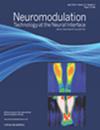Transcutaneous Neuromodulation Promotes Functional Regeneration of the External Urethral Sphincter Neural Circuitry in Two Models of Nerve Lesion in Female Rats
IF 3.2
3区 医学
Q2 CLINICAL NEUROLOGY
引用次数: 0
Abstract
Objective
This study investigated the effect of transcutaneous electrical stimulation of the dorsal nerve of the clitoris (DNC-TENS) on the functional recovery of the neural circuitry of the external urethral sphincter (EUS) neural circuitry in two models of childbirth trauma in rats: vaginal distension (VD) and injury of the motor branch of the pudendal nerve (MBPN).
Materials and Methods
In total, 42 Wistar adult female rats were used. Rats underwent sham VD (SH-VD), VD with sham DNC-TENS (VD SH-TENS) or VD with DNC-TENS, bilateral crush of MBPN crush injury (MBPNC) with sham DNC-TENS, or MBPNC with DNC-TENS. Stimulation was delivered to the dorsal region of the clitoral sheath, immediately and on days 2 and 4 after VD or MBPNC. The outcome parameters were EUS electromyograms (EMGs, amplitude and frequency) and cystometrograms (CMGs). Animals were evaluated at seven and 14 days after VD or SH-VD and at day 9 after the nerve crush.
Results
In SH-VD animals, the EUS EMG activity increased concurrently with bladder contraction. Tonic and bursting responses also were observed. VD significantly impaired EUS and CMG characteristics in the first week postlesion; in the VD SH-TENS group, the bursting EMG response was abolished; the amplitude of tonic activity decreased (p < 0.0001), and the duration of bladder contraction decreased. DNC-TENS facilitated recovery of bursting and tonic EUS EMG activity after VD (p < 0.0001). As with VD, MBPNC abolished EUS bursting activity and decreased (∼80%) tonic activity. TENS significantly improved EMG and CMG parameters.
Conclusions
VD and MBPNC significantly impair EUS EMG activity. DNC-TENS facilitates functional recovery of the EUS neural circuitry by promoting neuroregeneration and increases bladder compliance. Further studies are required to determine whether DNC-TENS is an effective noninvasive neuromodulation therapy to alleviate or prevent symptoms of stress urinary incontinence associated with childbirth trauma in women.
经皮神经调节促进两种雌性大鼠外尿道括约肌神经回路的功能再生。
目的:探讨经皮电刺激阴蒂背神经(DNC-TENS)对阴道膨胀(VD)和阴部神经运动支(MBPN)损伤两种分娩损伤大鼠外尿道括约肌(EUS)神经回路功能恢复的影响。材料与方法:选用Wistar成年雌性大鼠42只。大鼠分别接受假性VD (SH-VD)、VD合并假性DNC-TENS (VD SH-TENS)或VD合并DNC-TENS、双侧挤压性MBPN挤压损伤(MBPNC)合并假性DNC-TENS或MBPNC合并DNC-TENS治疗。在VD或MBPNC后立即以及第2天和第4天对阴蒂鞘背侧区域进行刺激。结果参数为EUS肌电图(emg,振幅和频率)和膀胱电图(CMGs)。在VD或SH-VD后第7天和第14天以及神经压迫后第9天对动物进行评估。结果:在SH-VD动物中,EUS肌电图活动与膀胱收缩同时增加。还观察到强直和破裂反应。VD在病变后1周内显著损害EUS和CMG特征;VD SH-TENS组肌电破裂反应被消除;紧张性活动幅度降低(p < 0.0001),膀胱收缩持续时间缩短。DNC-TENS促进VD后EUS肌电活动的恢复(p < 0.0001)。与VD一样,MBPNC消除了EUS的破裂活性,并降低了(约80%)强直活性。TENS可显著改善肌电和CMG参数。结论:VD和MBPNC显著损害EUS肌电活动。DNC-TENS通过促进神经再生和增加膀胱顺应性来促进EUS神经回路的功能恢复。需要进一步的研究来确定DNC-TENS是否是一种有效的无创神经调节疗法,以减轻或预防妇女分娩创伤相关的应激性尿失禁症状。
本文章由计算机程序翻译,如有差异,请以英文原文为准。
求助全文
约1分钟内获得全文
求助全文
来源期刊

Neuromodulation
医学-临床神经学
CiteScore
6.40
自引率
3.60%
发文量
978
审稿时长
54 days
期刊介绍:
Neuromodulation: Technology at the Neural Interface is the preeminent journal in the area of neuromodulation, providing our readership with the state of the art clinical, translational, and basic science research in the field. For clinicians, engineers, scientists and members of the biotechnology industry alike, Neuromodulation provides timely and rigorously peer-reviewed articles on the technology, science, and clinical application of devices that interface with the nervous system to treat disease and improve function.
 求助内容:
求助内容: 应助结果提醒方式:
应助结果提醒方式:


